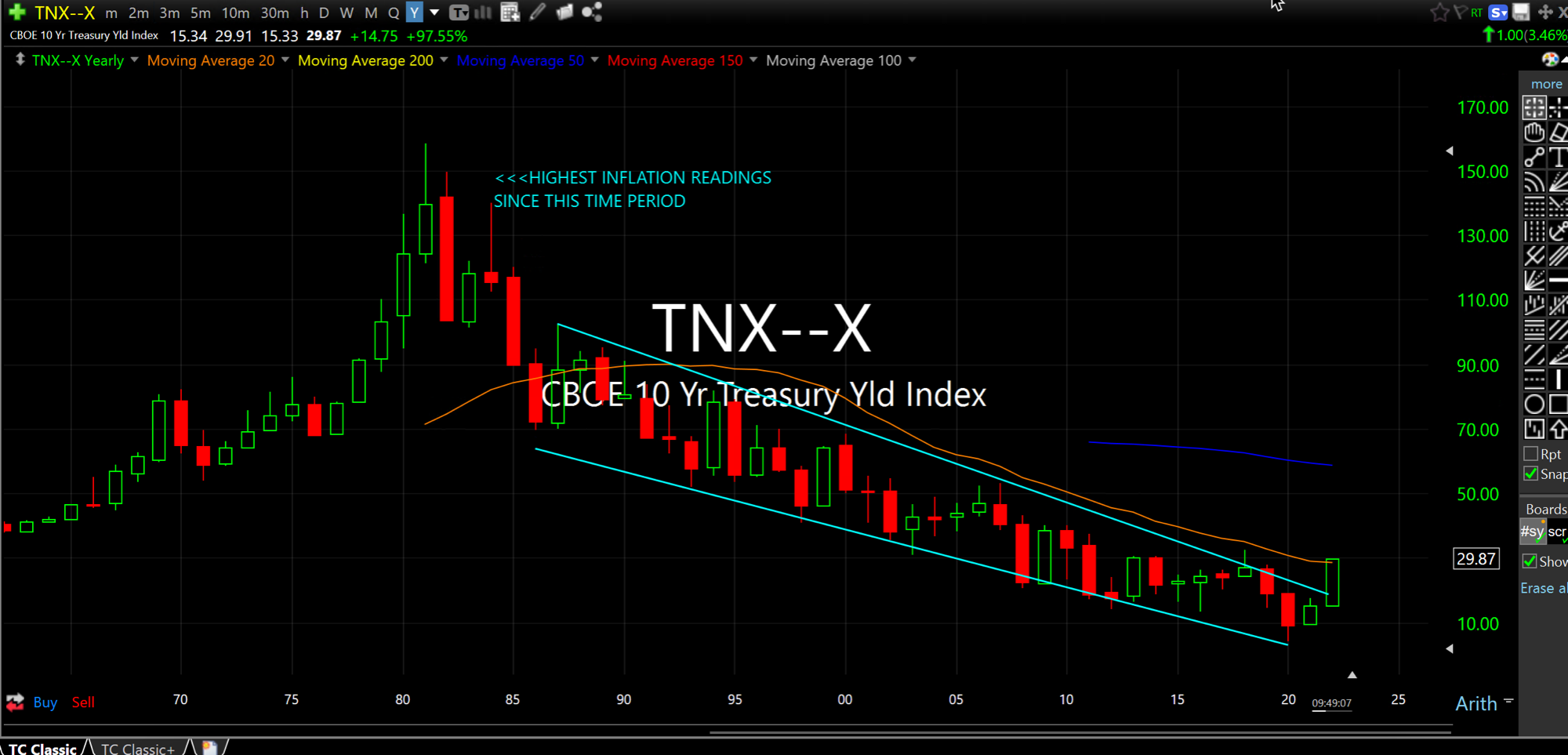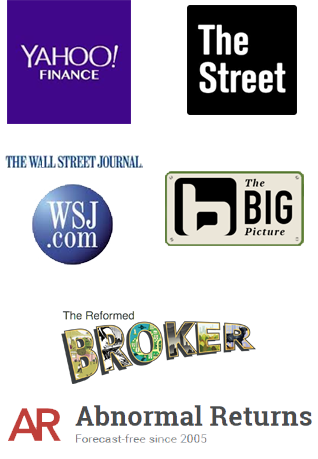02May9:55 amEST
The Exit Door for Treasuries is Growing Smaller By the Day

Amid swirling daily headlines regarding world wars, economic growth issues, politics, Buffett and Munger, social issues, and tons of other news, it can be easy to forget that the bond market is still flashing signs of a major regime change underway.
On the updated multi-decade chart for TNX, which represents rates (inverse the Treasury prices, here on the 10-Year Note), you can plainly see the four decade regime of low rates going lower yet. This low rate world enabled epic speculative endeavors and a general golden era of central banking where even the 2008 world-ending financial crises would be staved off by Ben Bernanke activating QE and dropping rates to zero.
But inflation is the great monster in the closet for central bankers and wild speculators alike. And we clearly have it. Although some demand destruction is inevitable with slowing growth and (slowly) tightening monetary policy, very few people are talking about this inflation being mostly supply-driven, especially via food, raw materials, and energy boondoggles.
Hence, to repeat a stance we have noted before, I expect this inflation to be sticky, high, and not abate so easily. Yes, a nuclear winter would be deflationary. But, to state the obvious, that would have its own set of issues which should transcend markets. And, yes, an epic stock market crash would be deflationary, too. But even then I have my doubts these supply-driven issues would recede so quickly.
Beyond that, we have a great detachment between the current federal funds rate and the actual inflationary number, let alone rates on the 10-Year (approaching 3% as we speak). In other words, there is an obvious gap you could steer multiple Queen Mary ships through between the actual inflation number and both the federal funds and 10-Year rates. And, yet, many are looking for Treasuries to bottom and rally, which they have tried to do to no avail in recent weeks.
To repeat an old Wall Street tenet, markets which should bounce but fail to do so and remain stubbornly oversold become uniquely dangerous. It clearly does not always resolve with a crash, and I am not bolding saying a crash is inevitable. But a bond market crash is certainly a viable risk in this context, one which seems to be conveniently overlooked on a daily basis.
Overall, a multi-decade regime change should not be taken lightly. The Fed is not likely to back away from its new tightening regime so quickly given how much political pressure in an election year they are under, coupled with an uptick in questions regarding their credibility in recent quarters. Powell has previously shown in 2018 he was capable of being hawkish when necessary before softening considerably and taking heat for it. I suspect he will not want to look to soft, so soon, once again.














